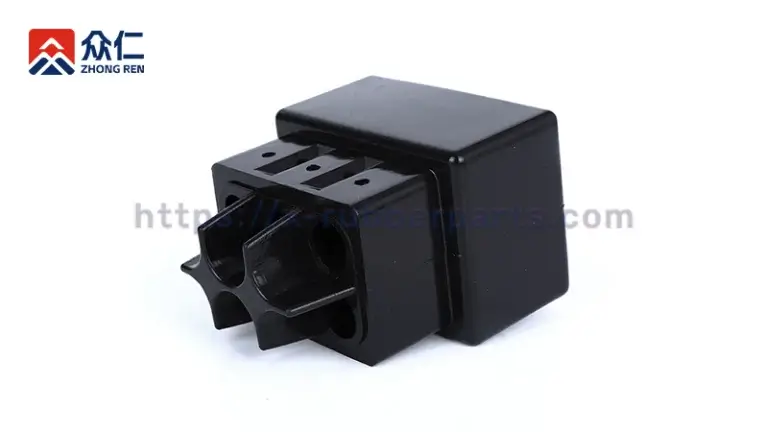

Custom Butyl Rubber Molding Product
Custom Butyl Rubber Molding Solution
Zhongren specializes in custom-molded butyl rubber components tailored for high-performance sealing and isolation applications. With years of experience and in-depth material expertise, we deliver high-performance butyl rubber parts that meet clients’ requirements. Butyl rubber molding offers a dependable, cost-effective solution with exceptional gas impermeability, low moisture absorption, and superior resistance to chemicals, aging, and environmental stress.
How Are Butyl Rubber Parts Manufactured?
For custom butyl rubber molding, Zhongren have different types of molded butyl rubber manufacturing processes depending on the specific product.
- Butyl Rubber Injection Molding
- Butyl Rubber Compression Molding
- Butyl Rubber Transfer Molding
Successful butyl rubber molding requires careful management of temperature and pressure to maintain material integrity and ensure proper curing. Due to its low permeability and high damping properties, thorough mold filling and adequate venting are critical.
Common Applications of Butyl Rubber Parts
Butyl rubber is ideal for use in tires, sealants, pharmaceutical closures, and vibration-damping systems, thanks to its exceptional gas impermeability, chemical resistance, and aging stability.
- Sealing gasket and O-ring
- Medical stoppers
- Automotive tire liner
- Diaphragm for pumps and valves
- Vibration dampening pad
- Vibration mount
- Radiator hoses
Our Valued-Added Services
- Design and Engineering Support
- Material Testing and Certification
- Surface Finishing and Printing
- Assembly and Sub-Assembly
- Custom Packaging and Labeling
Advantages of Butyl Rubber Molding
- Excellent barrier to gas and moisture
- Strong shock and vibration damping
- High resistance to weathering and ozone
- Good chemical resistance to acids and alkalis
- Reliable electrical insulation properties
- Performs well from -60°C to 120°C
- Durable with good tear resistance
Disadvantages of Butyl Rubber Molding
- Poor resistance to oils and fuels
- Low abrasion and wear resistance
- Tends to deform under compression
- Requires precise processing control
- Higher cost than general-purpose rubbers
FAQ with Butyl Rubber Molding
What's the Difference Between Butyl Rubber, Natural Rubber, and EPDM?
Butyl rubber offers excellent airtightness, chemical resistance, and vibration damping. Compared to natural rubber, it has lower elasticity but better aging stability. Compared to EPDM, it provides superior gas impermeability, while EPDM excels in weather, ozone, and UV resistance.
Is Butyl Rubber Waterproof?
How Many Types of Butyl Rubber Are There?
Does Butyl Rubber Harden Over Time?
It may harden slightly with age or prolonged exposure to heat.
Is Butyl Rubber Flammable?
It is not highly flammable but can burn under sustained flame.
Is Butyl Rubber Elastic?
How Long Does Butyl Rubber Last?
Typically 20–30 years, depending on use and environment.



